Brugge, Belgium #1 5-13
Of course we could’ve stayed in Holland for another month and never seen it all, but we knew our truck was arriving in a few days and we wanted to be a little closer to the port in Belgium. That gave us the perfect excuse to visit the beautiful town of Brugge.
In 1277, the first trade fleet from Genoa, Italy arrived in the harbor of Brugge, making it the most important link with the Mediterranean Sea. Since then, it has had its ups and downs. Around 1500, the River Zwin began filling with silt. No longer an important port, the city died. In 1907, Brugge built a new harbor closer to the ocean called Zeebrugge, giving the Germans a place to try out their 1st generation of submarines during World War I. By 2002, Brugge was the Cultural Capital of Europe. Today it is one of Europe’s best-preserved medieval cities and has become the most visited in Belgium. Thanks to strict building codes, the 13th century center was suspended in time five centuries ago.
This is a walking town. The 83-meter high belfry with its 47-bell carillon is an easily seen landmark from just about anywhere. We ambled through the cobbled streets, checking out the occasional museum, always tempted by the pleasant outdoor cafés along the meandering canals. We had been lucky to find a wonderful B&B (Andre’s B&B) just a short bus ride to the center.
Belgium is famous for its wonderful chocolate, so of course we had to try some just to see if it was as good as Swiss chocolate. It would cost a calorie-rich fortune to do a real side-by-side test, but for the time being we will give Swiss chocolate the edge. There was no lack of cute restaurants offering Flemish and Continental menus. We spotted a little hole-in the-wall pub on a side street. When we saw fresh trout being grilled, it was an easy choice for dinner. We were getting a feel for what this town has to offer and were looking forward to a couple of days here while we waited for customs to clear The Turtle V.
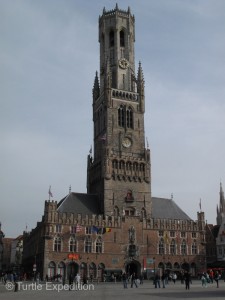
The 83-meter high belfry with its 47-bell carillon is an easily seen landmark from just about anywhere.
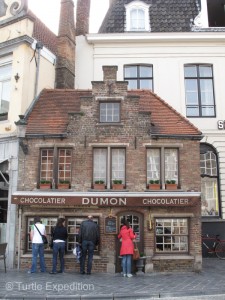
Belgium is famous for its wonderful chocolate, so of course we had to try some just to see if it was as good as Swiss.



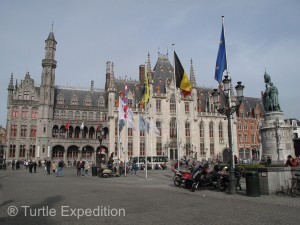
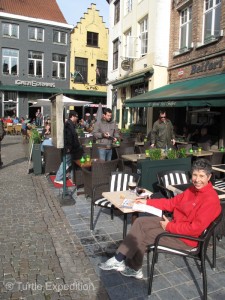
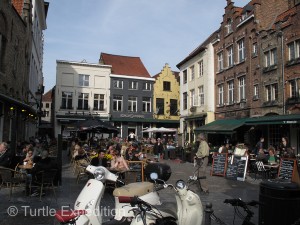
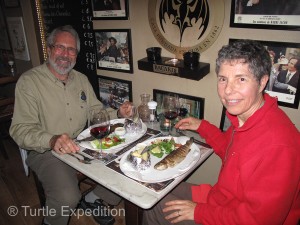







Leave a Comment